
Back pain is an equal-opportunity hobbler. It doesn’t matter if you’re a lifelong fitness nut or a dedicated channel surfer, back pain can strike anyone, at any time, for any number of reasons — or for no reason at all. Indeed, 80 percent of people will experience it at some point in their lives, and in 85 percent of cases, the pain can’t be attributed to an injury or medical condition. But that doesn’t mean you have to accept your fate. On the contrary, there are steps you can take to not only reduce your risk of experiencing it, but also relieve any aches you currently have, says Stuart McGill, a leading spine researcher and professor of spine biomechanics at the University of Waterloo, in Canada. Start with the ones below, which distill McGill’s 35 years of experience into three easy tips (and five must-do exercises) that anyone can use to beat back pain for good.
Step 1: Figure Out What’s Causing You Pain (If You Can)
“Most people skip this step,” says McGill. “They jump into doing strength exercises before they’ve stopped doing the thing that’s causing their pain in the first place.” If you sit at a computer all day, your pain might stem from poor posture. The reason: Muscles and connective tissues tend to become “fixed” in the position they’re in most often. The fix: Take a stretch break every 20 minutes, and stop hunching over your keyboard. Alternatively, if you’re pain is caused by poor lifting form — bending over at your waist instead of pushing your hips back during the squat, for example — your first priority is mastering proper technique. Perform big, compound exercises like the squat and deadlift using only your body weight until you’ve nailed the movement pattern, and then start adding weight again. Once you resolve what’s causing your pain (or if you can’t determine a specific one), move on to step two.
Step 2: Strengthen Your Core the Right Way
Ditch crunches, sit-ups, and other moves that flex your spine, and concentrate instead on moves like the ones below, which emphasize keeping your core stiff. That’s the primary job of your core, anyway: To resist movement, supporting and stabilizing your spine while the rest of you pushes, pulls, runs, and jumps. McGill calls these moves the Big Three. “They aren’t fancy,” he says, “but they guarantee spine stability and provide the foundation for pain-free movement.” Perform them every day whenever you have time, whether you’re working out or not.
Front to Side Plank
Assume a push up position, but with your elbows bent and your weight resting on your forearms. Your body should form a straight line from head to heels. Brace your abs as if you’re about to be punched in the gut, and hold that position for 10 seconds. Rotate up to your right into a side plank, supporting yourself on your left forearm. Hold for 10 seconds. Return to the starting position (known as a front plank), and hold for another 10 seconds. Repeat the sequence, this time rotating up to your left. That’s one round. Do three.
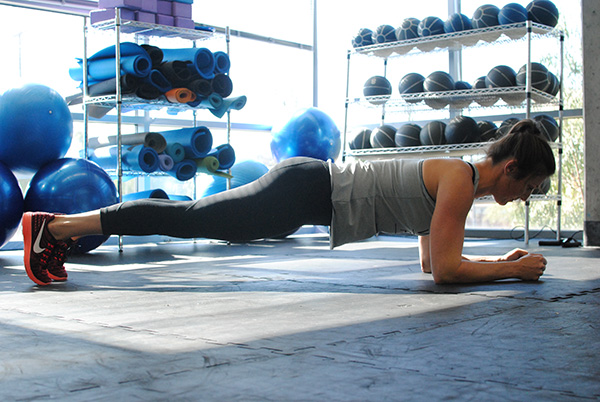
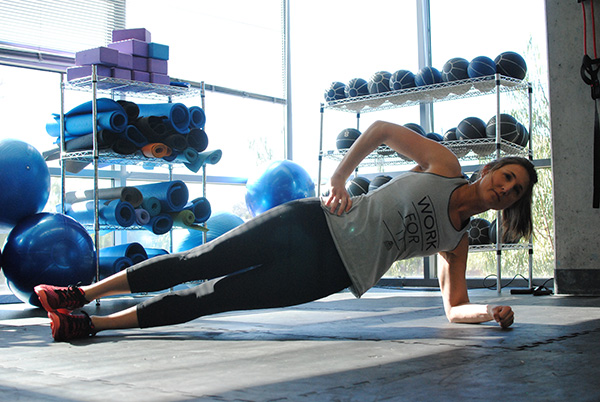
McGill Curlup
Lie face-up on the floor with your left leg straight, your right bent, and your right foot flat on the floor. Place your hands under your lower back, palms down. Slowly raise only your head and shoulders off the floor. Hold this position for 7 to 8 seconds, breathing deeply. That’s one rep. Switch legs (straighten your right leg and bend your left), and repeat. Do 6 reps total, alternating legs each time.
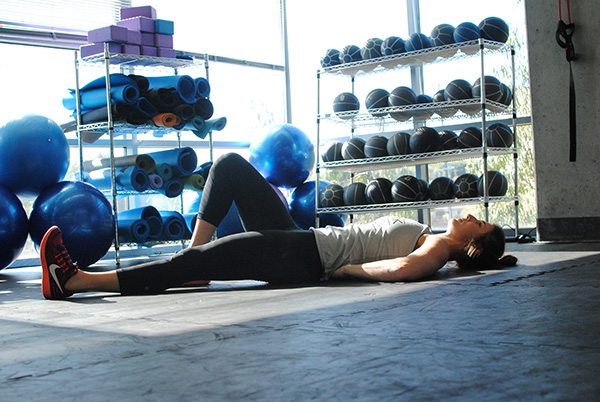

Bird Dog
Get down on your hands and knees with your hands directly below your shoulders and your knees directly below your hips. Simultaneously extend your left leg behind you and your right arm ahead of you. Hold for 10 seconds, and then return to the starting position. Repeat with your left leg and right arm. Do 6 to 12 reps total, alternating arms and legs each time.
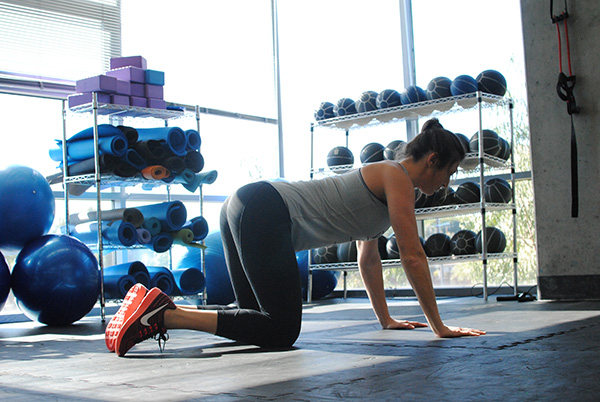
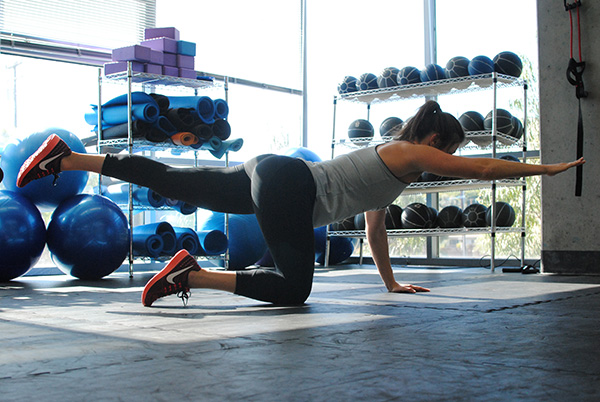
Step 3: Get your butt in gear
Here’s another problem with sitting all day: Gluteal amnesia (yes, that’s a real term). When your glutes are inactive for long periods of time, they forget how to contract. The muscles on the fronts of your hips (known as the psoas), meanwile, become overactive, causing them to shorten and tighten. The combination of tight psoas and weak glutes causes your pelvis to tilt forward, and increases the stress on your lumbar vertebrae. The result: back pain. The following two exercises will interrupt that cycle, helping to turn your glutes back on, says McGill.
Hip Airplane
Stand tall with your weight on your left leg and lift your left foot a few inches off the floor behind you. Keeping your back flat and your right leg in line with your torso, raise your arms out to your sides, push your hips back, and lower your torso. Now rotate up to the right until your hips and chest face that direction. Pause, and then rotate back down and up to your left. Pause again, and return to center. That’s one rep. Do 5, switch legs, and repeat.
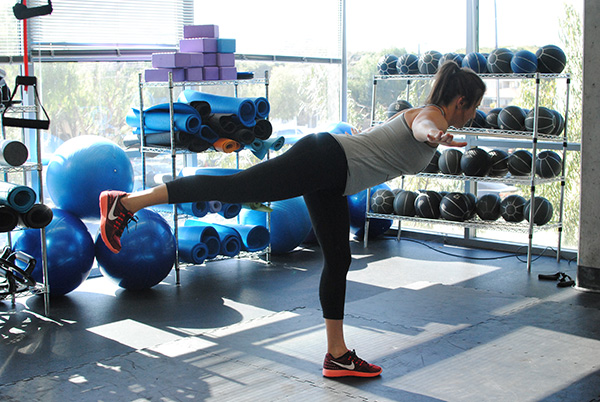
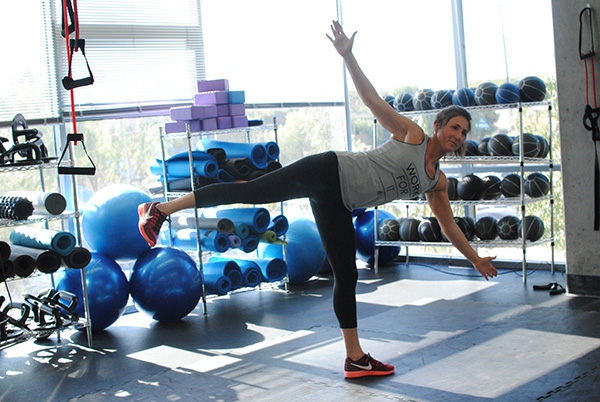
Quadruped Hip Extension
Get down on your hands and knees with your hands directly below your shoulders and your knees directly below your hips. Keeping your right knee bent 90 degrees, raise your right leg behind you until your upper leg is in line with your torso (your lower leg should point toward the ceiling). Hold for 10 seconds, and return to the starting position. Repeat with your left leg. Do 6 to 12 reps total.
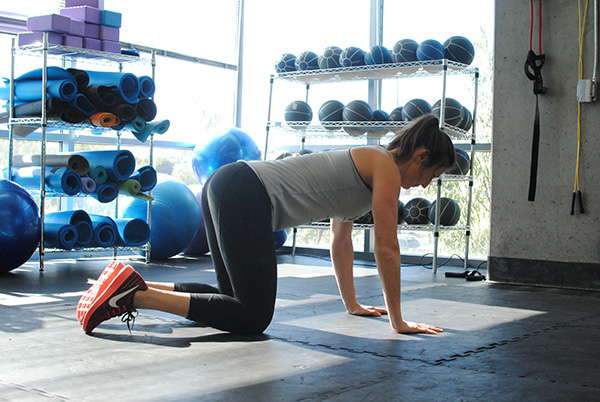
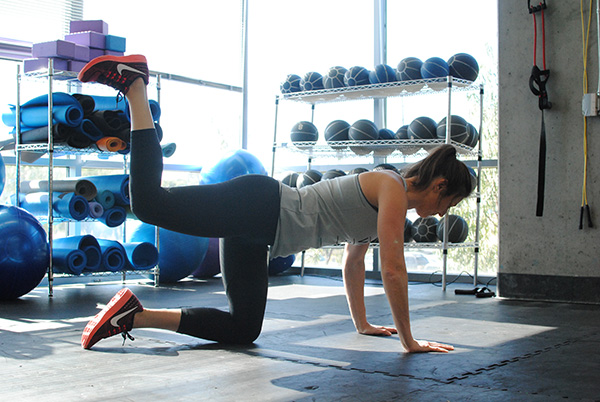
By: Beachbody




No comments:
Post a Comment